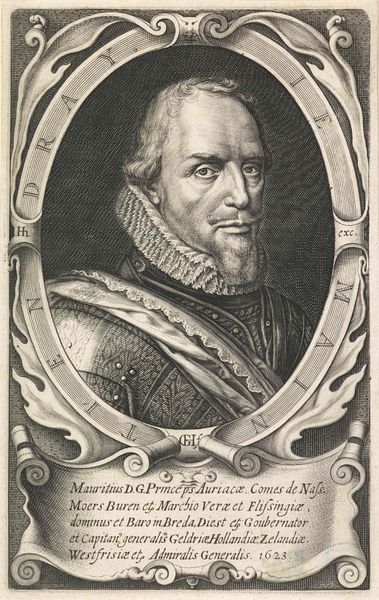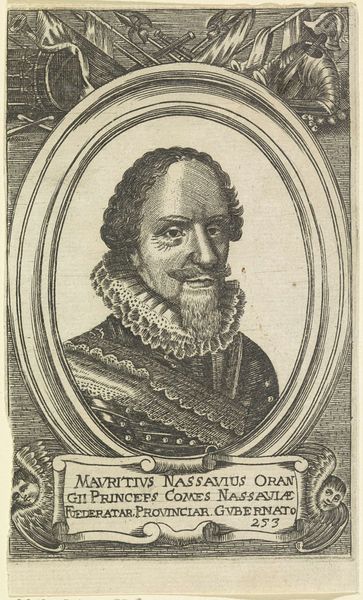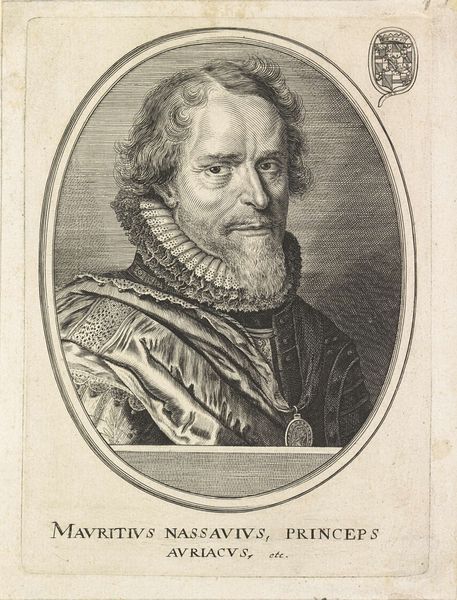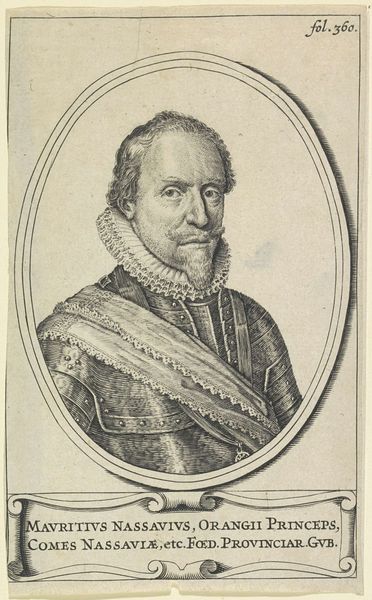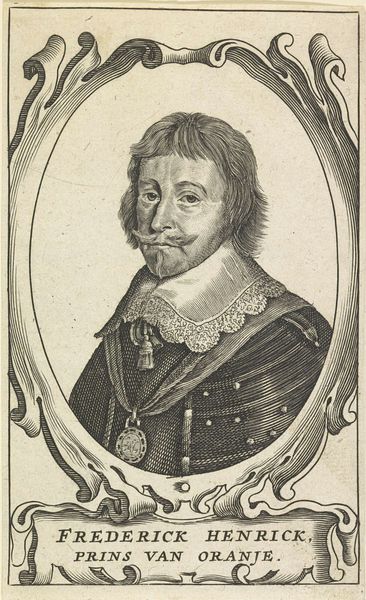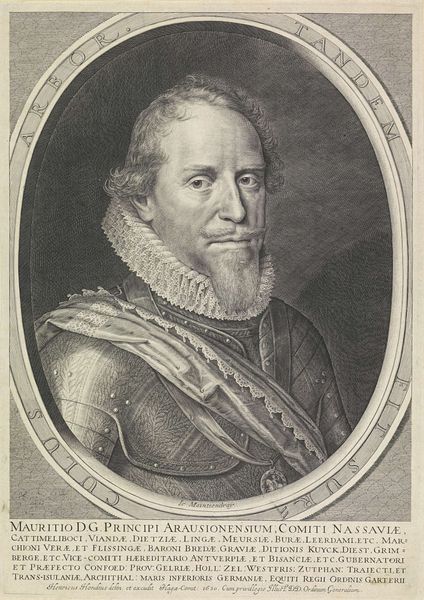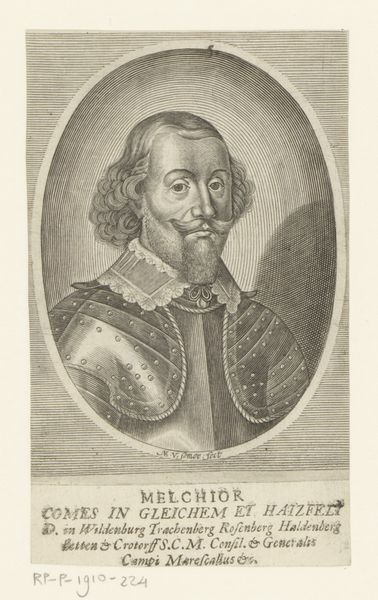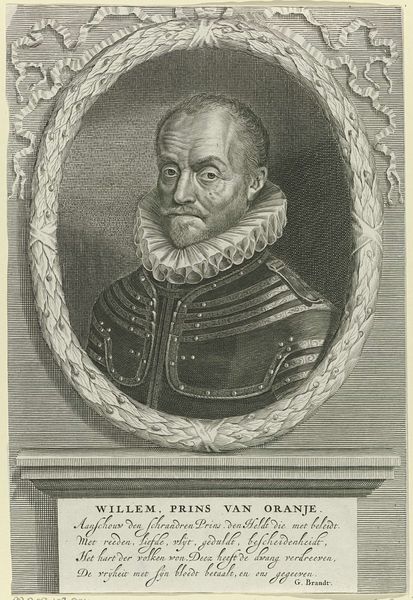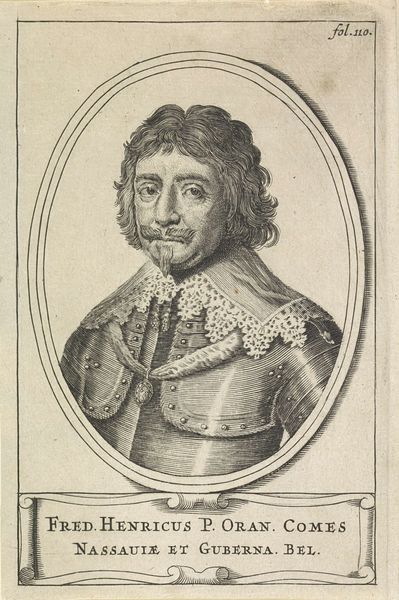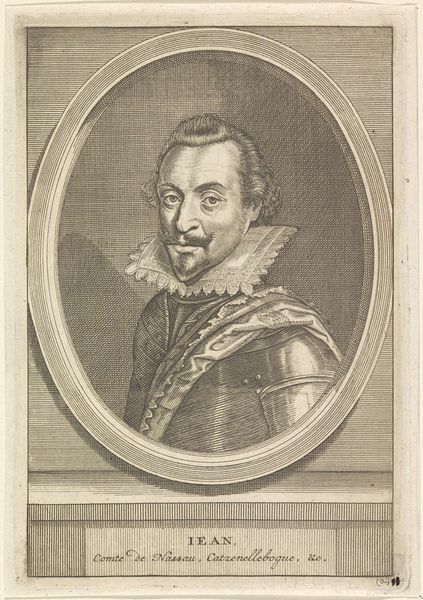
print, engraving
#
portrait
#
baroque
# print
#
history-painting
#
engraving
Dimensions: height 134 mm, width 82 mm
Copyright: Rijks Museum: Open Domain
Editor: This is a 17th-century print, an engraving to be exact, titled "Portret van Maurits, prins van Oranje," attributed to an anonymous artist and held at the Rijksmuseum. The detail is incredible. How should we approach unpacking this depiction of Prince Maurits? Curator: Well, first, let’s acknowledge that portraiture, especially of rulers, wasn't merely about capturing a likeness. It was about constructing an image of power, legitimacy, and perhaps even projecting a certain kind of masculinity. What do you notice about how Maurits is presented here? Consider everything from his attire to his gaze, even the framing of the image. Editor: The ornate frame and the armor immediately signify power, as does his confident gaze. I suppose that’s fairly obvious. But the lace collar and his carefully groomed beard seem to complicate that impression a bit. Is that contrast intentional? Curator: Exactly! The Baroque period was a time of great social and political upheaval. Consider the Dutch Republic's struggle for independence from Spain. Maurits was a key military leader. Think about the relationship between militaristic power, nobility, and emerging capitalist economies. His refined appearance can be understood as the symbolic expression of social changes during the Dutch Golden Age. Can the tensions between traditional aristocratic markers and emerging bourgeois values be reconciled here, maybe through an image? Editor: So it’s not simply a portrait of a powerful leader, but also a complex statement about the changing social landscape? The image seems to bridge the gap between eras. Curator: Precisely. By analyzing such images we start to reveal not just history, but also social anxieties, aspirations, and the ongoing negotiation of identity within evolving power structures. Editor: I see now. It gives you so much more to think about than just a picture of a person. Thanks for sharing your insights. Curator: My pleasure! Now you can look at art in an intersectional, dynamic way.
Comments
No comments
Be the first to comment and join the conversation on the ultimate creative platform.

